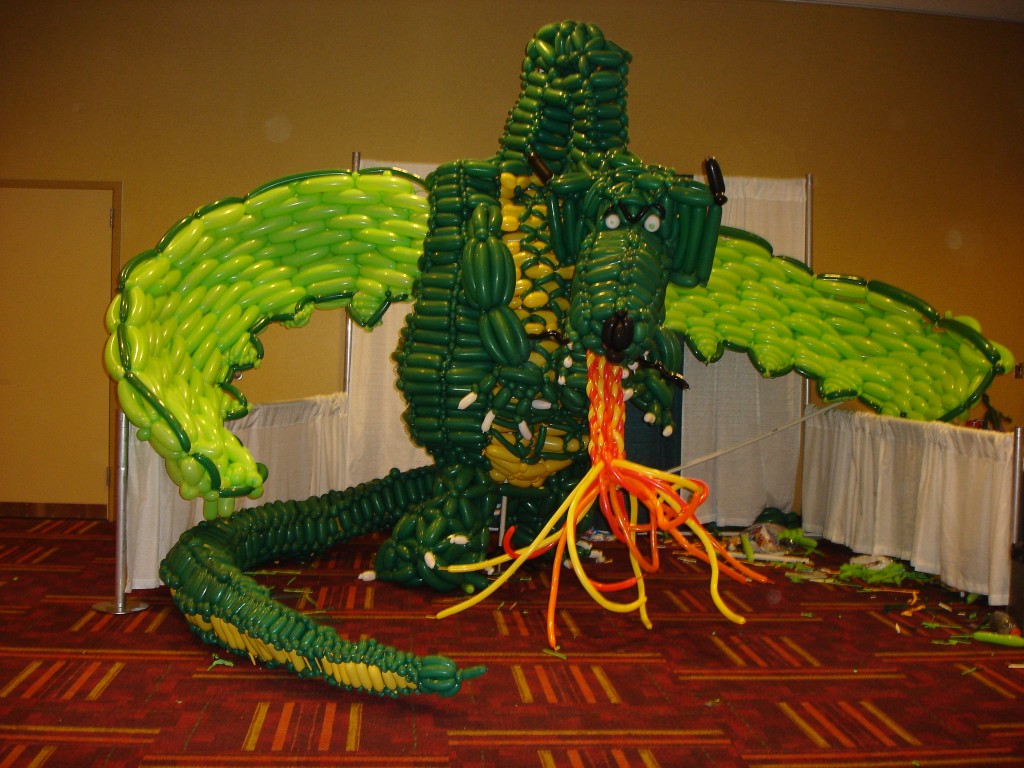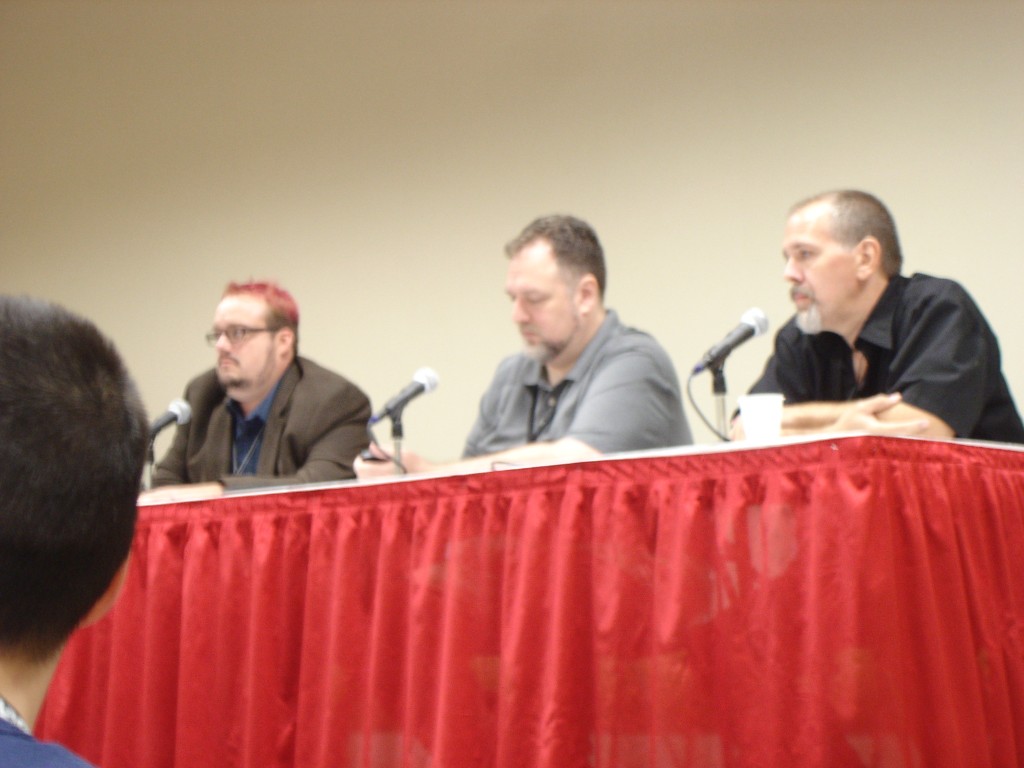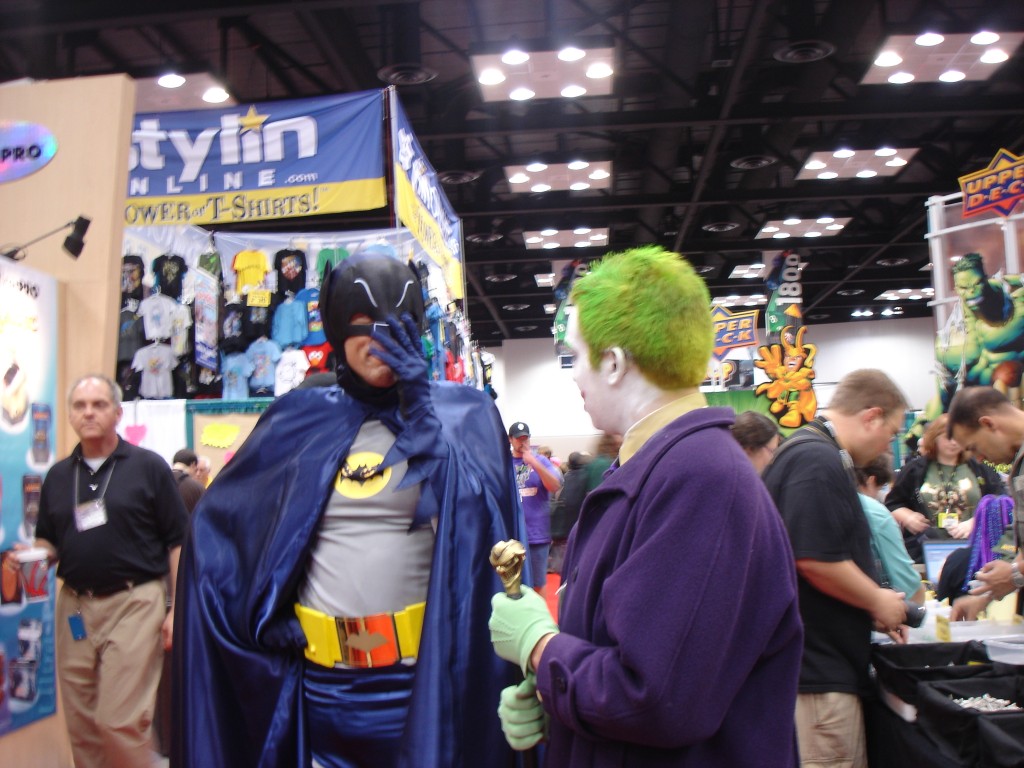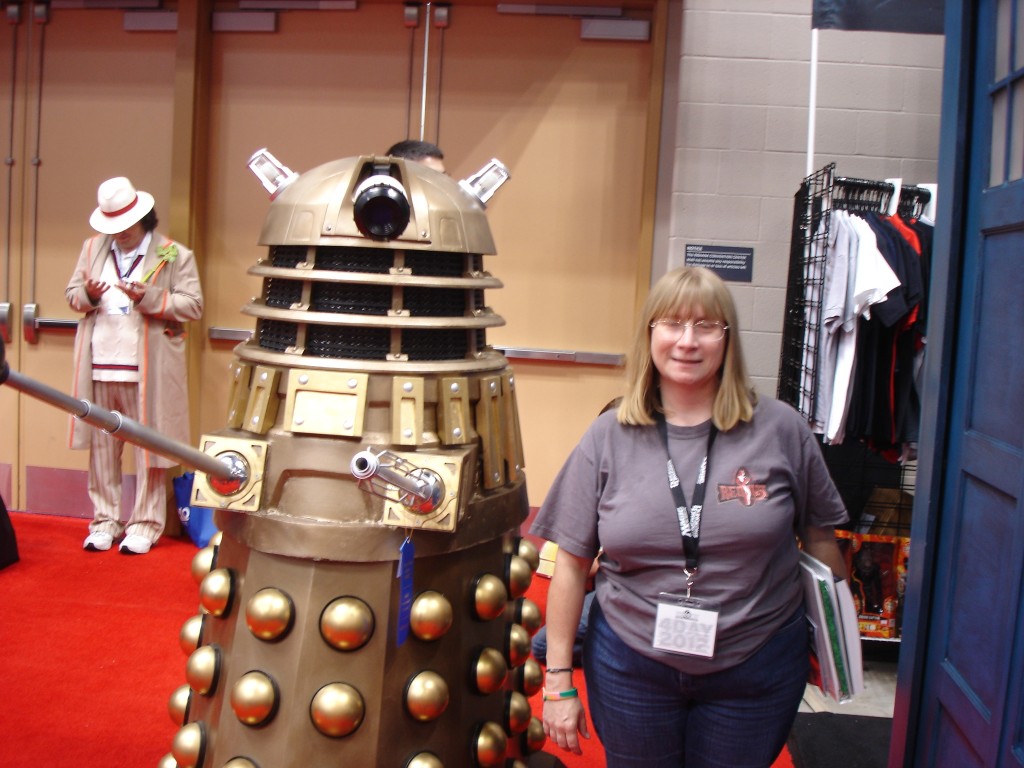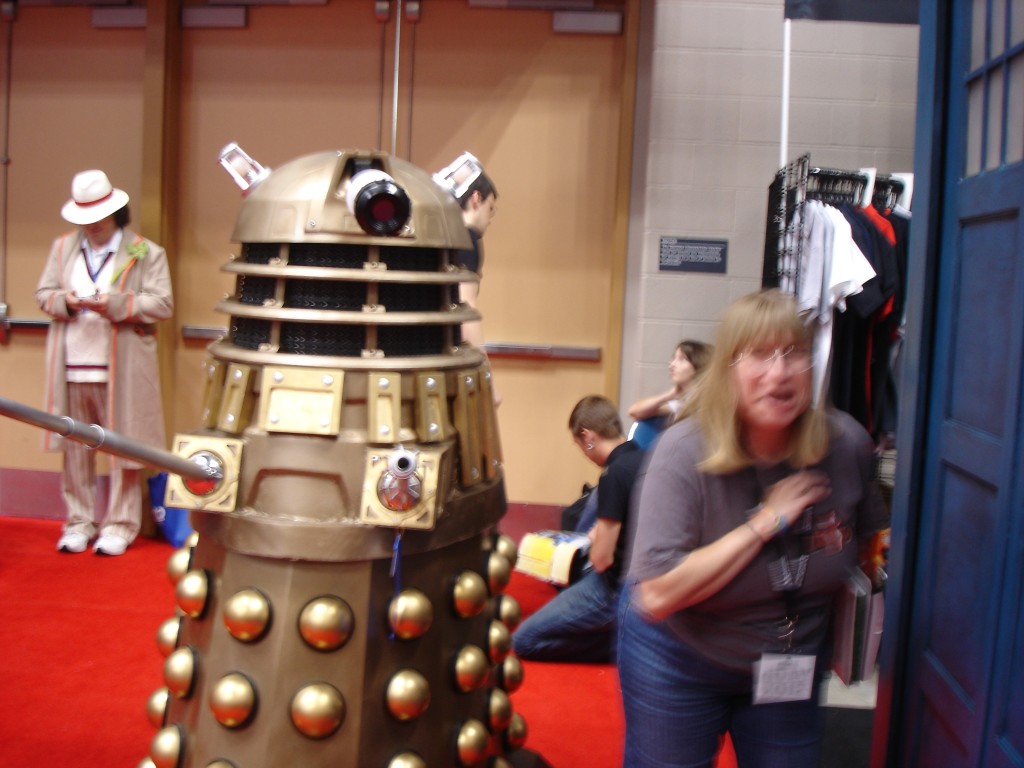GenCon 2012 Day 2 Events
Day 2 started out with a bang, literally, as I stopped to take a picture of a huge (over 8 foot tall) dragon being built from balloons. This is one of the charity events GenCon sponsors (they raise tens of thousands of dollars for multiple organizations throughout the GenCon convention). I am not sure if this is the world’s largest balloon animal, but I’m sure it’s close. Leaving the developing dragon behind, I made my way to the Fan Films Done Right panel.
The panel started with discussing the question, “What makes a fan film?”. General consensus found that a fan film contributes to the property and is usually inspired by the property. This can be done by capturing the feel of the show. The panel then addressed the concept of fan films versus parodies. Many felt parody could be used in a fan film, but it should be done carefully as a filmmaker can easily begin to insult the fans. It helps to really know the show/property to keep from making fun that disrespects. Make sure to watch the tone used. Next up was the question, why make a fan film? The big three ideas were: You have a burning desire to pay tribute, fan films often carry a built in audience associated with the original property, they can be a way to make your name. The panel spent a few minutes talking about IP issues, sharing stories of how they had addressed copyright and how if a fan film remains low profile and is not making money, most properties will work with you). They finished out the panel talking about what makes a good fan film (need to know the property you are basing the fan film on, be a fan yourself, the film has a way for fans to interact) and sharing resources
I cut out of Fan Films and raced across the convention (activities this year can be found in the convention center, three main con hotels, Union Train Station and a number of local businesses near the con) to the Doing Kickstarter Right Panel. Rich Thomas, Ryan Macklin and Gareth-Michael Skarka discussed their Kickstarter campaigns while taking questions from the audience. They opened the panel with the comment, “The official GenCon greeting has become, ‘So, how is your Kickstarter going?'”. Their tips and thoughts as they answered questions included:
- Make sure to put on the front page of your campaign a way to contact and connect with your project after the campaign ends. Do this BEFORE the campaign ends as Kickstarter does not allow you to go back and modify the main page once the campaign ends.
- Be careful how you use the campaign. Essentially Kickstarter is a form of Push Marketing, if you are not careful, you can become identified as nothing more than a spammer.
- A professional looking video and Kickstarter campaign is a two-edged sword. You can attract a lot of people with polish, but the charm of a “rough” video can be a draw to certain audiences.
- How many tiers/rewards to have and should you have staggered rewards (rewards that are released at different points of the campaign, such as offering a perk once the campaign is at 50%) is a tricky subject. Most of the panel believed fewer levels often are more manageable and deliverable.
- Be careful with stretch goals (a stretch goal is a perk/reward given out to backers once the initial money has been released and people continue to contribute). You can sometimes really eat into that extra money by offering the perks.
- Watch raising money in one fiscal year and not producing your product until the next, you will potentially be “hammered” by the taxes.
- You should be prepared to update and talk to your audience often and not just during the money-raising portion. Make sure you continue to update and send out communication (KickStarter has a great system for talking to your backers. You can even target messages just to certain tier/reward levels).
With their words of wisdom and new ideas running through my head, I headed off to my last panel of the day. Along the way I managed to hook up with some of the clan from Batman, it is amazing the range of costumes you can find. People will watch a film 100s of times to make sure they have every detail and can replicate the “look” exactly.
I settled into my seat for the Script Writing for Indie Films and Series panel. After brief introductions and a sharing of favorite script writing techniques and resources, the panel focused on taking questions from the audience. When asked how they edited their scripts, the wide range of writing styles was evident. The panel members’ answers ranged from writing a number of drafts before sharing it with others, to writing one maybe two drafts and giving it to someone for review. They all agreed that the person you give their script to should be a person you trust to give an honest critique (an additional recommendation is the person should be someone who is not family or closely linked to you). They also suggested giving the script to actors and having them try a read-thru as often this will highlight problems. The final question asked addressed copyright. None of the panel members had ever had their work plagiarized, and felt that with smaller films and projects, the chances were low of that happening. It was mentioned you can register your script with the Writer’s Guild of America and the Library of Congress. A number of the panel members ended the session by offering to read over scripts sent to them.
Once the formal panels are done for the day, GenCon offers films for viewing, gaming activities, live music and more as there are events scheduled 24 hours a day (the con never shuts down during the entire four days…never). I am off to explore new lands, view a few fan films and perhaps catch a concert or two.

